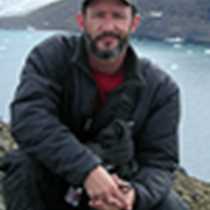Brown Bluff, Antarctic Continent
Today we would see and experience ice in all its forms and shapes. During the morning we were able to get our first continental landing of the voyage accomplished. Brown Bluff is the most northerly point of land on the entire Antarctic continent. It is a small beach between two large glaciers. Adelies and gentoo penguins nest here in large numbers during the summer at the base of massive volcanic cliffs that were deposited just a few million years ago.
The other activity this morning was Zodiac cruises amongst the sea ice, brash, growlers, bergy bits and icebergs that were found in the bay. Many of the larger pieces of ice were spit out of the Weddell Sea, which lay just a few miles from us. The multi-year sea ice, some 10-12 feet thick, was impressive as it grounded in the ebbing tide. Just off shore, in deeper water, lay the massive rotting tabular bergs that may stay locked up in the sea ice for years as they bounce around the Weddell Sea. Crabeater and leopard seals were seen from the boats both in the water and on the low-lying sea ice. One leopard seal was quite curious and followed a few Zodiacs to see what all the interest was about on shore.
In the afternoon we were able to get a sense of the thousands of years of snowfall represented by these floating buildings as the captain brought the bow of National Geographic Explorer fairly close to a floating tabular berg in Antarctic Sound. The conditions were perfect and silent as we marveled at the vast amount of water represented in this huge chunk of ice lying in water colder than itself. From here our next adventure takes us to Elephant Island.




